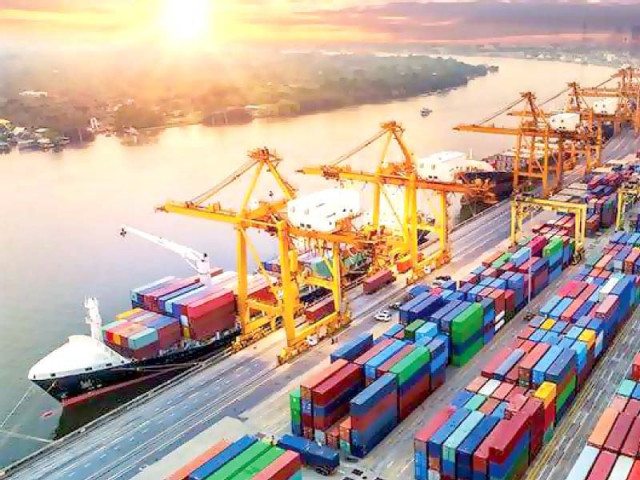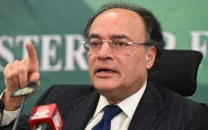Exports rise 14%, imports cross $50b in Jul-May FY21
Government has approved export target at 5.3% for next fiscal year

Pakistan’s imports have crossed $50 billion in 11 months of the outgoing fiscal year – the second time in three years, posing a new challenge for the government as growth in exports remain less than half of the pace of increase in imports.
Resultantly, the trade deficit widened to $27.5 billion and exceeded the annual target by $8 billion in the 11-month period of the current fiscal year, reported the Pakistan Bureau of Statistics (PBS) on Tuesday. For the current fiscal year, the government had set the trade deficit target at $19.7 billion, which was busted in just 10 months.
The deficit was higher by $6.4 billion or 30.6% over the same period of previous year, according to the PBS.
At the end of the PML-N government, Pakistan’s imports had grown to $60.8 billion, which had resulted into the highest-ever trade deficit of $37.7 billion in fiscal year 2017-18. It is for the first time that the Pakistan Tehreek-e-Insaf (PTI) government is dealing with an import bill of over $50 billion, which may cross $55 billion once the full year trade figures are available.
However, the silver lining for the ruling party is the foreign remittances that are expected to touch in this fiscal year to $29 billion, helping it avoiding 2018 like current account deficit situation.
Read more: Govt to grant industry status to rice mills to boost exports
The PBS stated that exports increased to $22.6 billion in July-May FY21 compared to $19.8 billion in the same period of last year. There was an increase of 14% or $2.8 billion in exports in 11 months, but it was not sufficient to bridge the yawning gap created by imports.
Imports during the July-May period increased 22.5% to $50.04 billion, higher by $9.2 billion. The government had set the annual imports target at $42.4 billion, which was already exceeded by $7.7 billion with one month remaining before the close of fiscal year.
For the next fiscal year, the government has approved the export target at 5.3% and increase in imports is estimated at close to 10% over this fiscal year’s final numbers.
An Asian Development Bank study has concluded that without fixing structural issues Pakistan would keep facing external sector problems if its economy grows more than 3.8% in a fiscal year.
For the next fiscal year 2021-22, the government has set the economic growth target at 4.8%.
The exports during past almost three years have remained around the level left behind by the PML-N government, which too was very low.
Pakistan’s exports have long remained around $2 billion per month and the trend has not significantly changed despite excessive currency depreciation during the PTI government’s tenure. However, the commerce adviser has been claiming, through his twitter handle, that Pakistan’s exports were performing exceptionally well.
On a month-on-month basis, exports shrank 25.5% to a mere $1.7 billion in May over April, according to the PBS. There was a reduction of $565 million in export receipts in May 2021 compared to the preceding month, it added.
Imports marginally increased by 1% month-on-month and stood at $5.3 billion last month. In absolute terms, there was an increase of $39 million in the import bill over April. As a result, the trade deficit widened 20% last month.
Commerce Adviser Abdul Razak Dawood claimed that the dip in exports was because of one-week holidays during Eid. However, the federal cabinet had exempted the export-related industries and services from any kind of restrictions.
On an annualised basis, exports in May amounted to $1.7 billion, which were higher by 18.5% or $258 million over the same month of the last year. Imports increased 85.5% to $5.3 billion last month on a year-on-year basis. In absolute terms, the imports increased $2.9 billion.
Resultantly, the trade deficit widened 150% in May 2021 on a year-on-year basis. The gap between imports and exports remained at $3.6 billion last month, a jump of $2.2 billion compared to a year ago.



















COMMENTS
Comments are moderated and generally will be posted if they are on-topic and not abusive.
For more information, please see our Comments FAQ